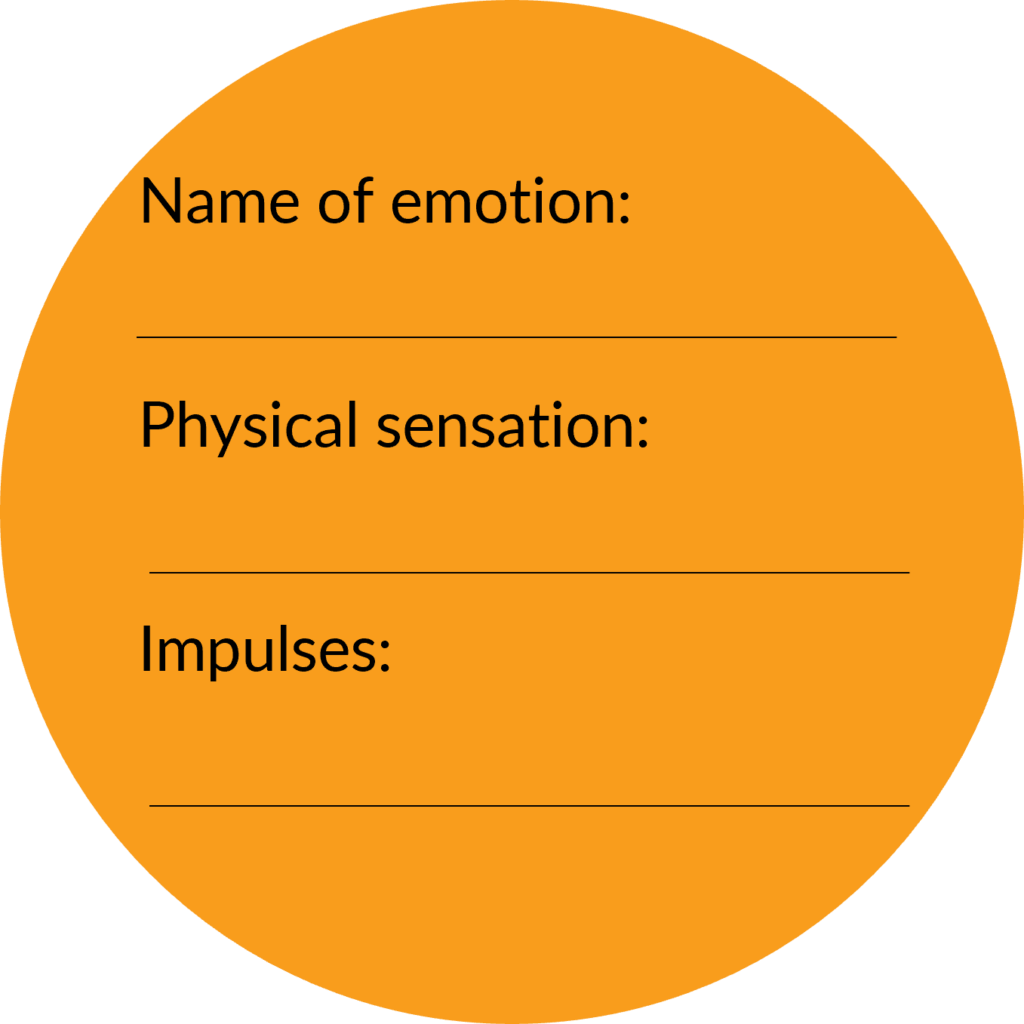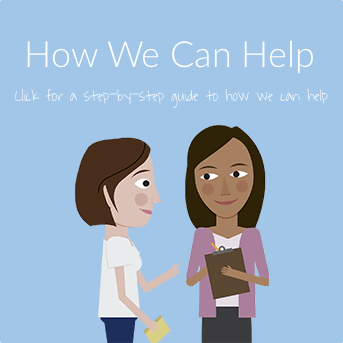How Learn to Live Delivers CBT: Part 2
Have you ever wondered why you are having a pleasant emotion like happiness or peace? Most have not. We just accept those emotions and move on. But everything changes when we are feeling discouraged, fearful, or angry. I’d like to share with you a CBT strategy that has been helpful to many people who face negative feelings. I call it the STEPP model.
One of the key concepts of cognitive behavioral therapy (CBT) is the idea that our thoughts affect how we feel. Many people struggling with depression or anxiety say that these emotions make them feel stuck. When this happens, they often don’t know what really causes these feelings or what to do about them. The STEPP model is designed to break down your experiences. This will give you a better understanding so you can find ways to help get unstuck in the future.

Emotion – E in STEPP
Let’s start with the orange circle in the middle – the emotion. The question is where does this emotion come from? Many people incorrectly believe their emotions come from a situation, which you see at the far left of the model (the dark rectangle).
Do you ever ask yourself “Why am I angry right now?” That anger is an emotion. That emotion can be triggered by many different things, such as two co-workers grinning at each other when you walk by. This is known as the situation.
As you can see from the model, it is more complicated than that. Not every person would have the same emotion in that situation. Some people would feel embarrassed when they saw those co-workers smiling at each other. Others would have no strong emotion. And some might experience the warmth of happiness.
Thought – T in STEPP
How could the same situation cause such different emotions? Looking at the model, it shows that thought; is in between situation and emotion. These thoughts are often a reminder of a past situation. Or a prediction of things to come.
If the ‘thought’ was “those two grinning coworkers were laughing at me”, you would clearly feel anger. But if the ‘thought’ was “those smiling coworkers were happy and having a pleasant time,” I might feel my own smile appear. Maybe even feel a bit of happiness. See the difference?
Developing the STEPP Model
When I developed the STEPP model several years ago, I looked at Albert Ellis’s ABC model, among other models of CBT. The A in the ABC model is for “Antecedent.” Since I am committed to avoiding complex language, antecedent had to go. Other models showed arrows going in both directions between our thoughts and emotions. While there are advantages to these models, I’ve found that with a cleaned up straight model, you can do a lot more.
Emotion can be broken down into three smaller parts:
- The name of the emotion
- The physical sensations
- The impulses that go with that emotion
When people have a hard time knowing how to label that emotion they are experiencing, it often helps to first identify the physical sensation and impulse. For example, if my physical sensations are tight muscles and feeling hot, and my impulse is to yell at someone, the emotion is most likely anger. You get the point.

I wanted to make it easier to identify the thought. Usually, a well-trained CBT therapist would ask individual clients in their office, “What was going through your mind at the time?” Many clinicians can make this kind of questioning work well. However, there is risk of potential confusion.
The person who walked past the grinning coworkers might say they were thinking “I just wanted to yell at them to go away”. Or maybe they were thinking, “Those two had big grins on their faces.” Those are thoughts, right? They certainly are, but notice that the thought of yelling at them was really an impulse. An impulse is the urge that goes with the emotions–to fight back when angry in this case.
Which Thought Caused My Emotion?
The reference to their big grins was more of a restatement of the situation. This is not a helpful thought that we can later inspect. And certainly not a thought that produced the emotion. To help identify the thought that caused the emotion, I developed something that I call “sentence stems.”
For each emotion, there are a number of thoughts that are most likely to produce the emotion in question. If I am trying to identify a thought, I can start with the sentence stem. Then personalize it to my situation. Now I have a thought that matches what I was experiencing, that explains my emotion. I will now be able to examine closely in the future.
Here are a couple examples of sentence stems:
For anger:
- ____ did it on purpose.
- ____ should not have done that.
- ____ did not respect me.
For anxiety:
- I might not be able to ____
- They might think ____
- What if ____
Performance and Precautions – P & P in STEPP
The two Ps in STEPP stand for performance and precaution. Performance are the things I say and do or don’t say and don’t do. Precautions, often called safety behaviors, are the things that I do to try to feel better that ultimately keep me stuck–things like comfort eating, substance use, blocking out my feelings. The fact that my performance does not match my impulses often is evidence that each of us possesses a high level of self-control. Meanwhile our precautions might seem like a way out of our struggles, but they just keep us believing we are unable to take on life’s challenges.
It All Comes Together
When we understand how all these pieces fit together, we can gather strength to handle those troubling emotions. When we look into the thoughts, we can often see that there are more accurate and helpful thoughts that could replace them, so have the opportunity to feel better. On the other hand, we can choose to form a new relationship with those troubling thoughts and learn to let them come and go.
I hope that you have plenty of pleasant experiences to enjoy freely today. But any of us with strong troubling emotions might see a warm light of hope appear when we see that it was just a thought that was driving those troubling emotions. Sometimes, that is all it takes.




